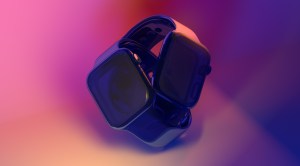The Best Uses for AR Glasses in Education and Training Environments
Augmented Reality (AR) glasses are rapidly becoming one of the most exciting advancements in the wearable technology space. With their ability to overlay digital information onto the real world, these devices hold great promise, especially in educational and training settings where immersive learning experiences can significantly enhance understanding and retention. In this article, we will explore some of the best uses for AR glasses in education and training environments.
Enhancing Interactive Learning Experiences
One of the primary benefits of AR glasses is their ability to create interactive learning experiences that engage students more deeply than traditional methods. For instance, when a student studies anatomy, wearing AR glasses can project 3D models of human organs directly onto their desk or even into their field of vision. This not only makes learning more engaging but also allows learners to visualize complex structures from different angles, leading to a better understanding.

Facilitating Remote Learning and Collaboration
AR glasses can bridge geographical gaps by allowing remote learners to participate in hands-on activities as if they were present physically. Using AR technology, instructors can guide students through complex tasks while providing real-time feedback. For example, a technician-in-training could use AR glasses to follow an instructor’s digital overlay while learning how to troubleshoot equipment issues without needing to be on-site.
Simulating Real-World Scenarios
Training environments that require practice under realistic conditions can significantly benefit from AR glasses. For example, medical students can practice surgical procedures with virtual patients projected through their AR lenses or pilots can train using simulated flight scenarios displayed right before them. This kind of simulation allows learners to gain practical experience without any risks associated with real-world practice.
Promoting Accessibility and Inclusion
AR glasses also serve as powerful tools for promoting accessibility within educational contexts. They can provide assistance for students with disabilities by offering features like live transcriptions or visual aids that help clarify difficult concepts. By making education more inclusive through tailored experiences delivered via augmented reality, all students have an opportunity to thrive academically regardless of their individual challenges.
Personalizing Learning Experiences
Finally, one of the most appealing aspects of using AR technology in education is its potential for personalization. With adaptive learning solutions powered by AI integrated into AR systems, educators can offer customized paths based on each learner’s pace and style. This might mean presenting additional resources overlaid on existing materials or adjusting content delivery based on immediate performance assessments.
In conclusion, the applications of AR glasses within educational and training environments are vast and varied—enabling enhanced interactivity, collaboration across distances, realistic simulations for skill development, greater accessibility for diverse learners, and personalized approaches tailored for individual needs. As this technology continues to evolve and become more accessible itself, we may soon find ourselves witnessing a revolution in how knowledge is imparted across various fields.
This text was generated using a large language model, and select text has been reviewed and moderated for purposes such as readability.


